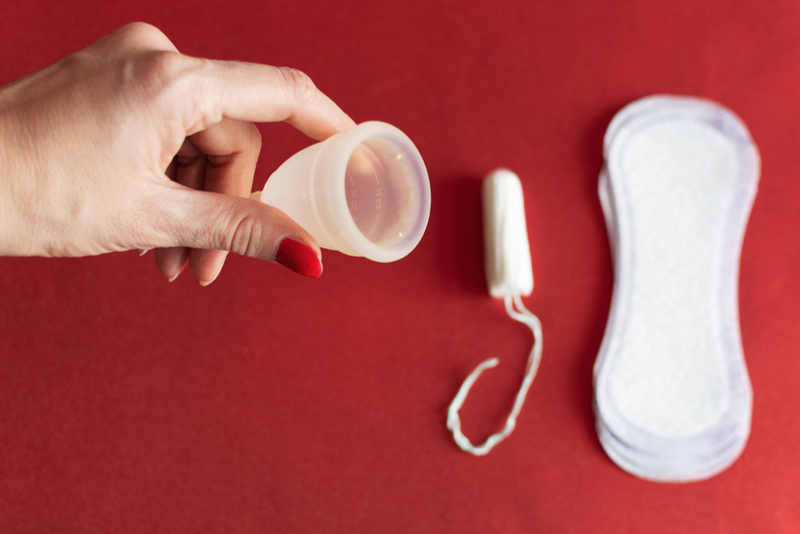Doctor's guide to help patients choose the best menstrual absorbent
M3 India Newsdesk Oct 25, 2017
Patients with reproductive tract infections are often treated with medicine but seldom get counseling regarding how to choose and how to use the menstrual absorbents.

According to AC Nielsen survey, around 6% of women in India lack adequate hygienic menstrual absorbents and around 88% of the women are forced to choose unhygienic menstrual absorbents such as ashes or husk sand.
This situation needs to be changed and medical practitioners can do their bit to help change this situation by counseling their patients.Discussion with patients having menstruation-related illnesses should include a discussion on choosing a right menstrual absorbent. Although it is important to emphasize the hygienic use of absorbent, some patients also need an education regarding the options of a variety of menstrual absorbents that are available in the market.
Here are some pointers for medical practitioners to help patients choose right menstrual absorbents for themselves
1. Talk about the available options to your patients!
Most of the adolescent girls and women in the reproductive age in our country prefer to use home-made cotton pads or sanitary pads as menstrual absorbents. There seems to be a dearth of awareness regarding other available options such as tampons, menstrual cups or market-based cotton pads (with wings). Doctors can show pictures of other products or keep some samples to show them to their patients
2. Talking about the pros and cons of the product chosen or recommended
No product comes with absolute benefits! There can be a preference for products that are environment friendly or a preference for products that are not required to be inserted inside the private parts. Talking to patients about their preferences and clearing any doubts always gives patients the confidence to make a healthy choice.
3. Breaking the myths associated with intact hymen
Many products such as tampons or menstrual cups are not chosen as there is a fear of breakage of the hymen due to their insertion into the vagina. Although most of the intense outdoor games or other physical activities such as cycling or dancing might already break the hymen, it is important
4. Discuss the dos and don’t’s of using the product
Each product has a unique usage style. Patients need to understand the approximate soaking capacity of each product and how usage beyond that time can invite bacterial or fungal growth that may be harmful to their health. Those patients preferring the use of cotton pads need to be taught the correct method of washing the product and drying it directly in the sunlight instead of inside a shed or inside the bathroom. Using soap or antibacterial while washing the cotton pads, sterilization of menstrual cup after every use, changing sanitary pads at least 3 times in a day and at least once in the night are some of the important instructions that should be highlighted in this discussion.
5. Discuss the choice as per the needs of the patient
Understanding physical demands of girl/women patients is a key in these discussions. Those with intense physical activities or patients active in sports or patients with demands of frequent travels may need menstrual absorbents that have a better absorbing capacity. Many women complain of itching, redness, and dryness near their private parts after using sanitary pads. In such cases, it is pertinent to have a detailed discussion with them regarding their menstrual absorbent usage practices in addition to the medical treatment as per requirement.
6. Vaginal hygiene- an ignored aspect in doctor-patient communication
In addition to the discussion regarding menstrual products, patients need counseling on how to clean their private parts. For many women, it becomes a double-edged sword as the use of soap makes their vagina drier and on the other hand, completely avoiding the use of soap can be unhygienic. Introducing them to various market-based products which help to maintain the pH of the vagina is one of the musts for any patient with reproductive tract infection.
7. Do not avoid stressing the importance of cotton innerwear
It might sound obvious, but many girls or women might not associate their infection with the type of clothing they choose for their innerwear. Those using synthetic innerwear or a tight innerwear may simply be ignorant of the fact that wearing a cotton-made and comfortable innerwear is one of the best solutions to avoid vaginal infections.
If male medical practitioners find it awkward to discuss these topics with their female patients, it is best to have a trained female medical personnel or a nurse who has a skill of communicating these delicate yet important topics with ease.
Medical prescription for reproductive tract infections should ideally be coupled with health education on menstruation and on menstrual products.
That is possibly the best way to control the recurrence of RTIs!
The writer is pursuing a doctorate in Social epidemiology at the Indian Institute of Technology, Gandhinagar working on adolescent and menstrual health.
Disclaimer-The information and views set out in this article are those of the author(s) and do not necessarily reflect the official opinion of M3 India. Neither M3 India nor any person acting on their behalf may be held responsible for the use which may be made of the information contained therein.
-
Exclusive Write-ups & Webinars by KOLs
-
Daily Quiz by specialty
-
Paid Market Research Surveys
-
Case discussions, News & Journals' summaries